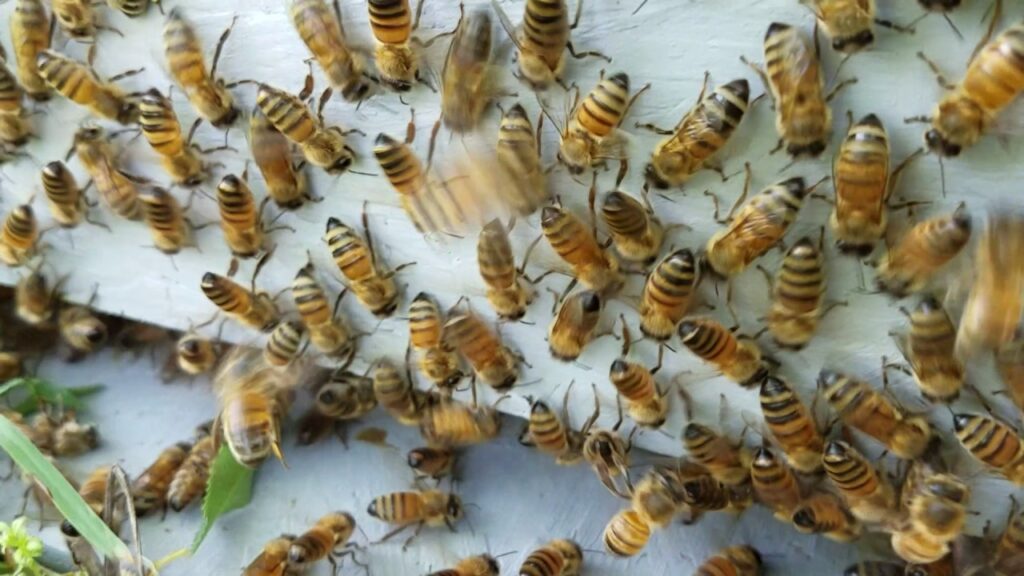Healthy gardens thrive when nature is allowed to work in perfect harmony, and bees are central to this balance. As tireless pollinators, they transfer pollen between flowers, enabling fruits, vegetables, and ornamental plants to flourish. Their activity supports biodiversity by ensuring that flowering plants reproduce successfully, enriching ecosystems with life and vibrancy. Without their daily pollination cycles, gardens would struggle to produce the abundant blooms and edible crops that so many people enjoy throughout the year.
Bees have evolved to work efficiently outdoors, moving gracefully between blossoms in search of nectar and pollen. Their keen sense of smell and ability to navigate landscapes make them uniquely suited to this essential task. They are most active in warm daylight hours, which aligns perfectly with peak flowering times. These behaviors contribute to robust plant growth and create garden environments that support other pollinators, birds, and beneficial insects. By doing their work outside, bees help maintain ecological balance without ever needing to invade human living spaces.
Their preference for gardens over indoor environments is no accident. Bees instinctively seek open spaces with abundant floral resources and natural light. Houses and other enclosed structures lack these critical elements, making them unattractive to most colonies. Even when they accidentally wander inside, they quickly become disoriented and seek a way out. This natural aversion explains why healthy gardens teem with activity while homes typically remain bee-free.
Why Gardens Naturally Attract Bees
Well-designed gardens provide everything bees need to thrive: sunlight, blooming flowers, fresh air, and open movement pathways. Flowering plants offer nectar and pollen—their primary sources of nourishment. This reliable food supply draws bees throughout the warm months, encouraging them to establish stable foraging patterns. As they collect nectar, they pollinate plants, increasing fruit and flower yields. Gardens with diverse flowering species tend to host more pollinators, creating vibrant outdoor spaces full of life and color.
Certain plant species are particularly attractive to bees because of their scent, shape, and nectar content. Lavender, sunflowers, and clover, for example, provide accessible blooms that make pollination effortless. These flowers act as natural magnets, drawing bees repeatedly and helping maintain thriving ecosystems. The consistent availability of resources in gardens contrasts sharply with the sterility of indoor spaces, where no natural nectar or pollen can be found. For bees, the choice between a lively garden and an empty room is simple.
Environmental factors like temperature and air circulation also influence where bees choose to spend their time. They thrive in warm, well-ventilated environments where flight is easy and efficient. Indoors, artificial lighting and closed windows disrupt their orientation, making navigation difficult. Unlike other pests, bees do not seek food scraps or dark corners—they follow flowers and sunlight. This natural inclination explains their strong connection to gardens while avoiding indoor areas whenever possible.
Why Bees Rarely Enter Homes
While bees are vital to outdoor ecosystems, they naturally avoid entering houses or other enclosed spaces. Indoor environments lack the floral resources that guide their behavior, making them unsuitable for feeding or nesting. Bees rely on scent, sunlight, and air movement to navigate, and homes disrupt all three. When they do accidentally enter, it is usually through open doors or windows while foraging nearby. Once inside, they quickly become confused and anxious to escape, confirming that their natural habitat remains outdoors.
The structure of homes also creates barriers for bee activity. Artificial lighting confuses their internal navigation systems, while solid walls limit their ability to return to foraging grounds. Unlike wasps, bees do not build nests in attics or behind walls unless exceptional circumstances push them indoors. Even then, such events are rare because gardens offer more favorable conditions for their survival. This clear preference for outdoor spaces makes managing their presence relatively straightforward.
In rare situations where colonies accidentally establish themselves inside structures, professional intervention may be necessary. In such cases, contacting bee removal service in San Marcos provides a humane solution that protects both bees and residents. Expert teams can relocate colonies safely, ensuring that these valuable pollinators continue contributing to the environment in appropriate outdoor locations. This thoughtful approach reflects the respect bees deserve while maintaining comfortable, bee-free homes for families.
Supporting Healthy Bee Populations Outdoors
Healthy gardens depend on the steady work of bees, and supporting their activity benefits both the environment and homeowners. One effective strategy involves planting a variety of flowering species that bloom at different times of the year. This ensures that bees have a consistent supply of nectar and pollen from spring through autumn. With reliable resources, bees are less likely to wander too close to human living spaces. Gardens rich in color and fragrance naturally become their preferred zones of activity.
Another way to support bees involves limiting pesticide use. Harsh chemicals disrupt pollinator health and can significantly reduce bee populations in residential areas. Choosing natural or organic gardening methods creates safer habitats, allowing bees to pollinate without risk. Over time, these practices contribute to a stable, thriving ecosystem that benefits plants, pollinators, and homeowners alike. Such measures align human interests with environmental stewardship, creating lasting harmony between people and nature.
Providing shallow water sources can further enhance garden appeal for bees. Simple additions like birdbaths with pebbles give them hydration without encouraging them to enter homes. They prefer sunlit, open spaces for gathering water, reinforcing their natural tendency to remain outdoors. By creating welcoming garden environments, homeowners give bees every reason to stay in their proper habitats.
Achieving Balance Between Nature and Comfort
Coexisting with bees requires understanding their instincts, respecting their ecological role, and creating spaces that serve both sides. Gardens flourish under their care, becoming vibrant ecosystems full of color, fragrance, and vitality. Indoors, meanwhile, remains undisturbed, offering comfortable living areas for people. This natural division between outdoor and indoor spaces aligns perfectly with bee behavior, making conflict rare when homeowners act mindfully.
Awareness plays a significant role in maintaining this harmony. When people recognize the value bees bring, they are more likely to adopt gentle, informed strategies. Simple habits like keeping windows screened, sealing wall gaps, and scheduling yard work strategically reduce accidental encounters. Because bees prefer gardens over houses, even small adjustments help maintain comfortable, well-balanced living environments.
Education also strengthens long-term coexistence. Sharing knowledge with family and neighbors encourages consistent practices that protect pollinators while keeping homes secure. Communities that understand the importance of bees often experience healthier gardens and stronger environmental stewardship. This collective awareness transforms bees from perceived nuisances into cherished partners in sustaining natural beauty.



